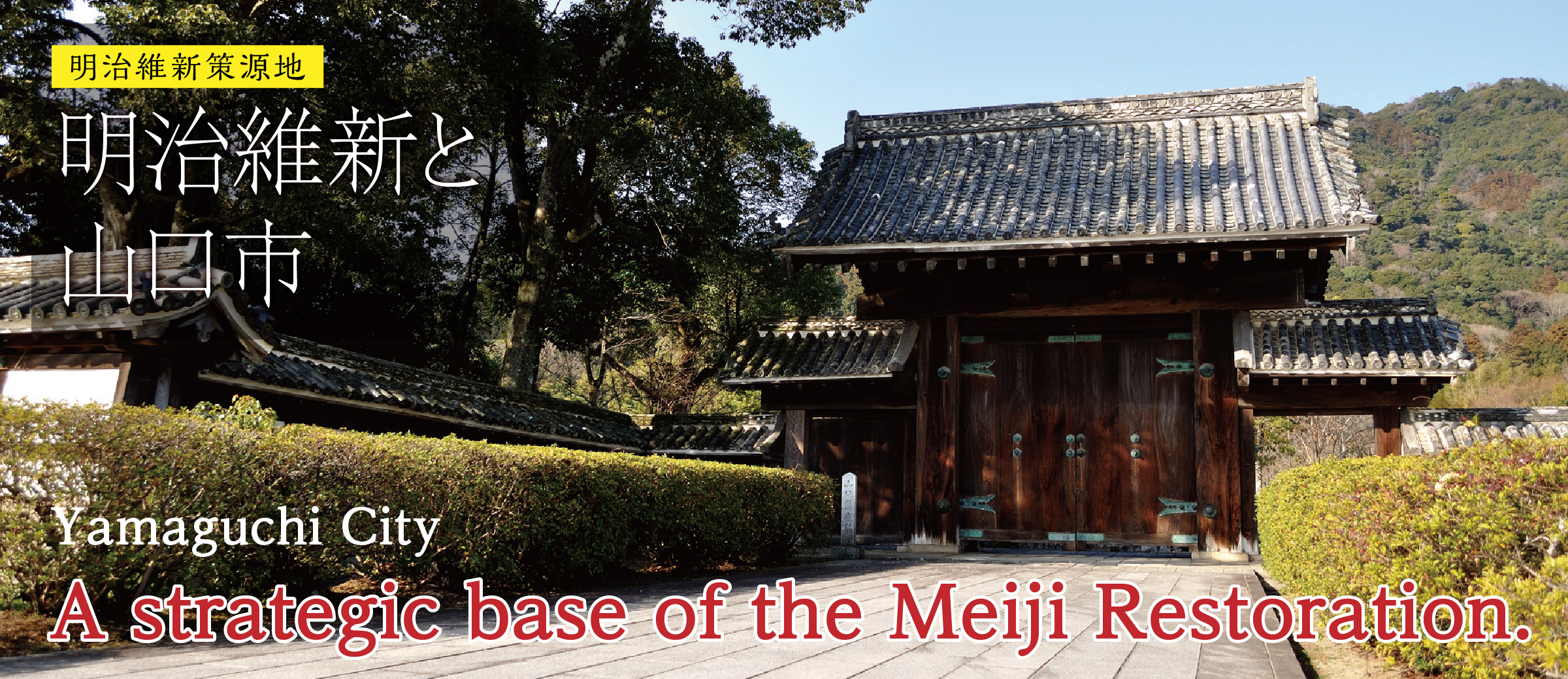Great Men’s Handbook
Yamaguchi City - a strategic base of the Meiji Restoration.
The Great Men's Handbook of patriots who played an active part in this area.
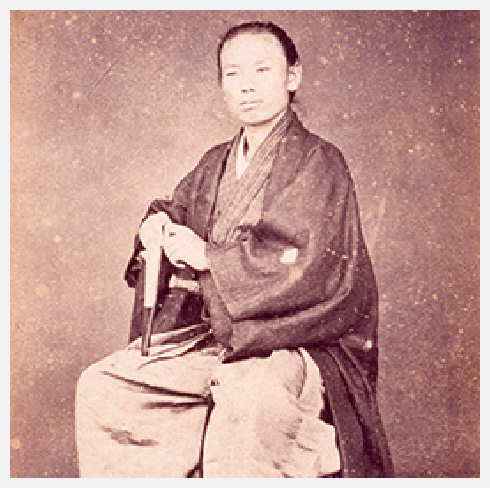
Picture: Yamaguchi Prefectural Museum
1835~1915 (Died at the age of 79)
Birthplace:Yuda (present-day Yuda Onsen district, Yamaguchi city)
First Minister of Foreign Affairs of Japan
Politician/ industrialist
Inoue Kaoru
Profile
Born into a samurai family, he attended Yamaguchi’s Koshu-dō (forerunner institution of present day’s Yamaguchi High School) and Hagi’s Meirinkan domain school.
He was part of the Sonnō jōi movement (revere the emperor and expel the barbarians), participating in the 1863 arson attack to the British legation in Shinagawa.
That same year he was smuggled out of Japan by Chōshū domain, along with four other promising young samurai, and travelled to the United Kingdom, where they would acquire knowledge of the western nations and gain access to military technology.
He returned to Japan in a failed attempt to stop the Bombardments of Shimonoseki (conducted by the joint naval forces of several Western nations as a retaliation for attacks by Chōshū domain aimed at foreign ships that sailed through the straits)
After the arrival of a punitive expedition launched against Chōshū by the bakufu, intended as a show of force that sought the domain’s submission, Kaoru, far from bowing to the shogun’s demands, advocated for rearming and launching a counteroffensive. Alarmed by this, the domain’s conservative politicians plotted his assassination. Inoue miraculously survived the attack, and fought two years later against the bakufu along with Takasugi Shinsaku.
After the Meiji Restoration, he became a leading member of the new government, serving as the Minister of Foreign Affairs, Agriculture and Commerce, Home Affairs, Finance, and Acting Prime Minister. He was also closely associated with the financial world.
Places in Yamaguchi related to this figure
- » Tōshunji temple
- Steele commemorating Inoue Kaoru’s attack
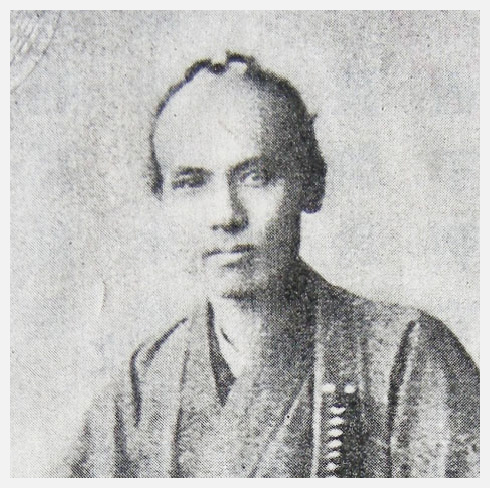
Picture: Yamaguchi Prefectural Archives
1835 - 1920 (Died at the age of 85)
Birthplace:Mihori (present-day Ōuchi-Mihori district, Yamaguchi city)
Parliamentary Secretary for Chōshū Domain in Edo
Politician /calligrapher
Sugi Magoshichirō
Profile
Born into the Ueki samurai family, he was adopted and his surname changed to Sugi.
Studied at Meirinkan, the Chōshū domain’s school in Hagi.
In 1861, Sugi visited Western Europe as part of a mission commissioned by the shogunate. Upon his return to Japan, he undertook various political duties of great importance. He negotiated peace, along with Inoue Kaoru, after the setback of the Shimonoseki Bombardment (carried out by joint naval forces from Great Britain, France, the Netherlands and the United States, in retaliation of attacks by Chōshū on Western ships). He also negotiated peace after the Kōzanji uprising (coup by the reformists, led by Takasugi Shinsaku, to remove the conservative faction “Zokuron-ha”, that sought cooperation with the bakufu, from power in the han.)
After the Meiji Restoration, Sugi Magoshichirō held several offices in the Imperial Household Ministry (present-day Imperial Household Agency)
His sense of humor and affable personality made him a beloved character. He was also widely acknowledged as a great calligrapher.
Places in Yamaguchi related to this figure
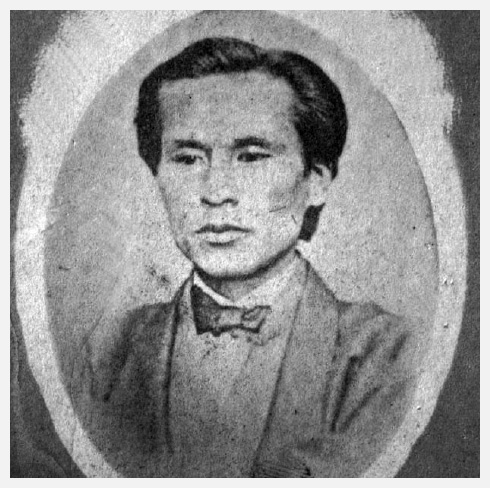
Picture: Hagi Museum
1837~1917 (Died at the age of 80)
Birthplace:Futajima (present-day Aio-Futajima district, Yamaguchi city)
Vice chairman of the Sanji-in (former advisory board on legal matters, forerunner institution of present-day’s Cabinet legislation bureau)
Scholar/ Politician
Yamao Yōzō
Profile
Born to a local governor’s family, he was educated to serve that purpose from a young age. He travels to Edo to complete his training by learning kenjutsu at a prestigious dōjō. There he meets Kido Takayoshi, with whom he had a brotherly relationship.
In 1862 he joins the Mitategumi, a group created by Takasugi Shinsaku and Kusaka Genzui which was responsible for the arson attack on the British legation in Shinagawa.
In 1863 he was granted samurai status and clandestinely sent to study in the United Kingdom along with Endō Kinsuke, Nomura Yakichi, Itō Hirobumi and Inoue Kaoru, who came to be known as the “Chōshū Five”. Yōzō studied engineering and shipbuilding.
Yōzō returned to Japan soon after the Meiji Restoration took place, and joined the new government.
Along with Itō Hirobumi, Yamao Yōzō established the Ministry of Public Works following the indications of Edmund Morel, who was chief engineer in charge of Japan’s railroad development. He also proposed the establishment of the College of Engineering, the first institution of its kind in Japan and which later became the Faculty of Engineering at the University of Tokyo.
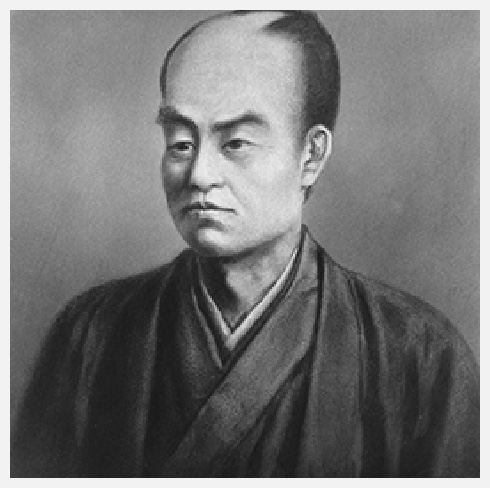
Picture: National Diet Library
1824~1869 (Died at the age of 45)
Birthplace:Suzenji (present-day Suzenji district, Yamaguchi city)
1st deputy Minister of Military Affairs
Doctor/ Scholar of Western studies/ Military strategist
Ōmura Masujirō
Profile
Born in Suzenji village (Yamaguchi), Ōmura studied medicine continuing with his family tradition. He traveled to Osaka in 1846, where he joined Tekijuku, a private school led by a doctor and expert in rangaku (Western science and technology) Ogata Kōan. Masujirō himself became headmaster at a later time.
He returned home at 26 to practice medicine, but eventually accepts an offer from daimyo Date Munenari from the Uwajima domain (present-time Ehime prefecture), as a translator of military science bibliography and a strategist.
Word of his success reached Chōshū, where he finally returns to undertake the task of modernizing and reorganizing the domain’s army in 1861, in preparation for the second Chōshū Expedition ordered by the bakufu. Not only did he introduce the use of modern weaponry but also the concept (controversial at first) of extending military training to commoners. As a commander he also achieved many decisive victories.
These achievements earned him the de facto recognition the highest military authority under the new Meiji government. One of his measures was the abolition of the fiefs and of daimyo’s private armies, which would lay the foundations of a modern national military characterized by universal conscription.
However, these measures were rejected by many samurai and in 1869, a group of radicals who still opposed the adoption of Western ideas attacked him at an inn in Kyoto and he died of his wounds shortly after.
Places in Yamaguchi related to this figure
- » Fumonji temple
- » Ōmura shrine
- Matsudaya Ryokan
- » Chinryūtei
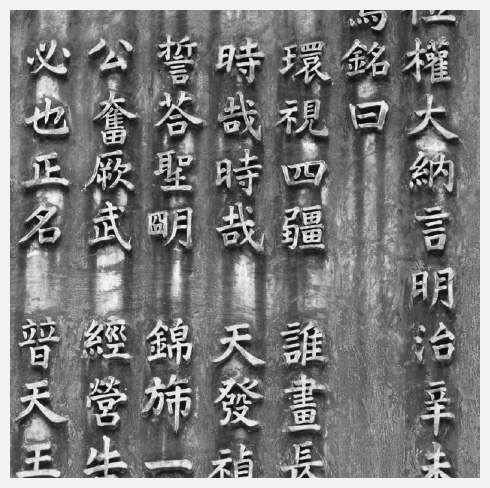
Picture: Imperial compilation of steels in bronze
1842~1927 (Died at the age of 85)
Birthplace:Nagano (present-day Ōuchi-Nagano, Yamaguchi City)
Feudal retainer of Chōshū Domain
Politician/ Calligrapher
Nomura Motosuke
Profile
Born Arichi, he was adopted by the Nomura family. He studied at the Meirinkan academy in Hagi.
In 1866 he becomes the heir of his family and undertakes a position of trust as adviser for Chōshū domain’s daimyo, Mōri Takachika.
Travelled to Edo to study Chinese classical literature, Confucianism, history, poetry and calligraphy. He then returned to Chōshū to become Meirinkan’s headmaster.
After the Meiji Restoration he held prestigious positions such as governor of Ibaraki prefecture and member of the Genroin (national assembly during the early years of Meiji, institution which precedes present day’s National Diet)
Highly admired because of his calligraphies and produced numerous works. Some of the monuments throughout Yamaguchi city feature calligraphy by Nomura Motosuke, such as the bronze stele dedicated to Mōri Takachika at Kōzan park.
Places in Yamaguchi related to this figure
- Monument in memory of the soldiers of the militia disbanded during Meiji
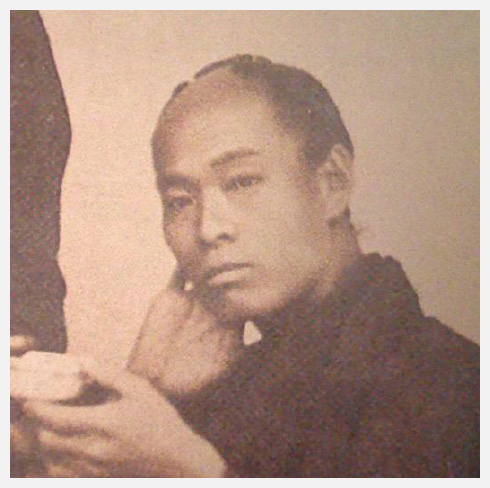
Picture: Tōgyōan temple’s Museum/ Tōgyō Memorial Hall, Shimonoseki
1829~1868 (Died at the age of 39)
Birthplace:Ushirogawara (present-day Ushirogawara district, Yamaguchi city)
Feudal retainer of Chōshū Domain
Samurai warrior / Politician
Fukuda Kyōhei
Profile
A samurai with a passion for knowledge, Fukuda traveled across Japan on several study trips until the age of 35 when he enlisted in the Kiheitai militia in 1863. He would eventually be promoted to officer and deputy commander. It is said that he tried to prevent the Kōzanji revolt by blocking the advance of Shinsaku’s horse as he was about to stage a coup to gain control of the han’s politics.
Fukuda also took part in many battles of the Bakumatsu period. After the imperial troops finally subdued the remnants of the shogun’s supporters in the north of Japan, Fukuda returned home to Shimonoseki to celebrate the Meiji Restoration and the establishment of the new government, but had the misfortune of suffering a stroke that would end his life.
Described as being generous-hearted and true to his ideals, he was highly regarded by the younger soldiers. His ashes were deposited in the temple Tōgyōan of Shimonoseki, though his followers also dedicated him a grave in Yamaguchi city’s Ōuchi-Mihori district.
Places in Yamaguchi related to this figure
- Fukuda Kyōhei’s grave
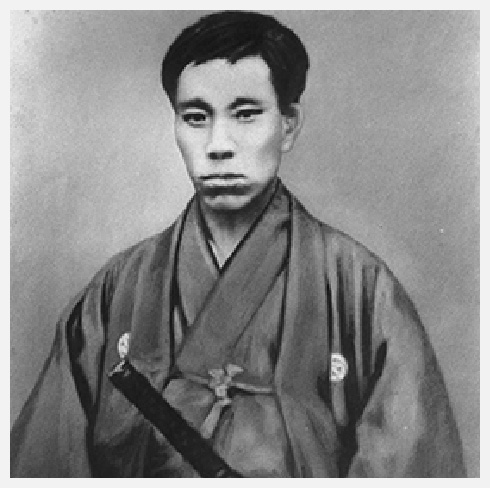
Picture: National Diet Library
1839 – 1867 (Died at the age of 27)
Feudal retainer of Chōshū Domain
Samurai warrior / Politician
Takasugi Shinsaku
Profile
One of the main figures of the early stages of the Bakumatsu. In Hagi, his hometown, he is regarded as a hero who exerted all possible efforts towards the modernization of Japan, not only military-wise, but in political and social matters as well.
Born into a samurai family, he joined the Shōka Sonjuku, the academy founded by Yoshida Shōin, where he became one of his favorite students.
Secretly sent to China by the Mōri clan, Takasugi was appalled at the consequences of European imperialism on the Chinese empire. That caused him to become an ardent supporter of the sonnō jōi movement, whose aim was to expel all Westerners from Japan. However, with time he concluded that such task was impossible and became an advocate of Western military techniques.
When the Bombardment of Shimonoseki (1864), conducted by Western warships, evidenced the inferiority of Japanese traditional troops, the domain called on Takasugi to carry out a military reform. He was only 25 at the time. Takasugi created paramilitary units made up of soldiers of mixed social backgrounds (under the feudal regime, only the samurai class were allowed to carry weapons). The most famous unit was the Kiheitai.
Alarmed at Choshu’s growing radicalism, the shogun sent punitive expeditions to the domain in 1864 and once again in 1865. While the first one didn’t end up in war, a year later Takasugi had organized all the units under his command and equipped them with western weapons. As a consequence, the shogun’s army suffered a defeat which would greatly alter the power balance in Japan for the first time in more than 250 years.
In 1868, after the conclusion of the alliance with Satsuma domain (present-day Kagoshima), samurai from both domains moved on Kyoto in force and overthrew the shogun, establishing a new central government under the Meiji emperor. However, Takasugi did not leave to see the change of era he helped to build: he died of tuberculosis in 1867, at the young age of 28.
Places in Yamaguchi related to this figure
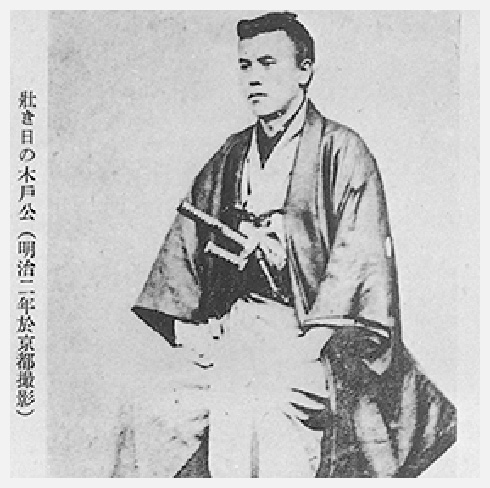
Picture: National Diet Library
1833 – 1877 (Died at the age of 43)
Feudal retainer of Chōshū Domain
Samurai warrior / Politician
Kido Takayoshi
Profile
Born into an influential warrior family, Kido got involved in the politics of Chōshū since an early age. As a student of Yoshida Shōin, he had a close relationship with the group of activists that would lead the movement to overthrow Tokugawa regime.
Since 1858, while he was posted in Chōshū domain's Edo residence, Kido served as liaison between the domain bureaucracy and the young samurai who supported the sonnō jōi movement.
Transferred to Kyōto, he was unable to prevent the September 30, 1863 coup d'état by which the Chōshū forces where driven out of the city. After surviving the attack on the Ikedaya carried out by the Shinsengumi troops and participating in a new unsuccessful attempt by Chōshū to regain control of the city in 1864, he was forced into hiding and had to carry out his activities in secret.
Once Takasugi Shinsaku seized political control of Chōshū, Kido began to negotiate an alliance with samurai from Satsuma, and, along with Ōkubo Toshimichi and Saigō Takamori, its most outstanding figures, would head the coup d’état that eventually overthrew the Tokugawa regime and restored the emperor to power.
With the new Meiji era, Kido became one of the most powerful men in the new government. He was one of those responsible for transferring the imperial capital from Kyoto to Edo (renamed Tokyo) and for persuading the main daimyo to surrender their domains to the emperor. Kido also helped devise the administrative division of the country into prefectures.
He visited Europe and the USA as a part of the Iwakura mission. When he returned to Japan, he became a strong advocate of the establishment of a constitutional government.
Places in Yamaguchi related to this figure
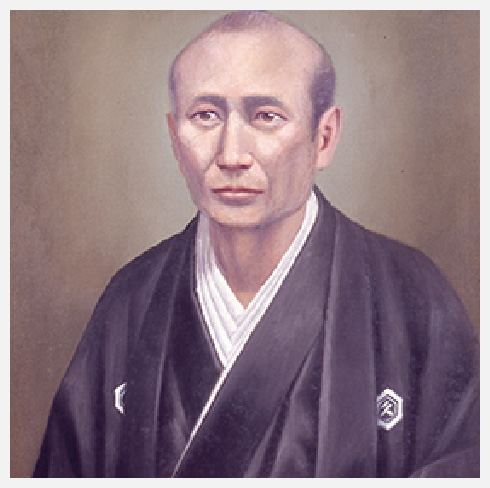
Picture: Yamaguchi Prefectural Museum
1823 – 1864 (Died at the age of 41)
Feudal retainer of Chōshū Domain
Samurai warrior / Politician
Sufu Masanosuke
Profile
Born in Hagi as the fifth son of the Sufu family, secondary branch of the Masuda clan, loyal retainers of the Mōri clan. His father died shortly after he was born, followed by his uncle, so with only six months of age Masanosuke became the head and heir of his family.
He excelled in his studies in Meirinkan, the domain’s school, and led a student group.
In 1847 he became an official of the han, where he soon attained a leading position and contributed to the economic, military and industrial reforms that were carried out during that period, and even had some of the most brilliant students of Yoshida Shōin, such as Kido Takayoshi or Takasugi Shinsaku, take part in the han’s politics.
In 1858 he orders Yoshida Shōin to be imprisoned, after learning that he had written letters encouraging the assassination of a high official of the bakufu whose policies included forcing emperor Kōmei to sign the inequal treaties with the United States and eliminating the sonnō jōi samurai in Kyoto.
In 1864, with the bakufu’s first punitive expedition on its way towards Chōshū, and after the assassination attempt on Inoue Kaoru by the conservative faction Zokuran-ha, he commits seppuku for assuming the responsibility for the social turmoil the domain had been thrown into. He was 42 years old.
Places in Yamaguchi related to this figure
- Sufu park
- » Chinryūtei
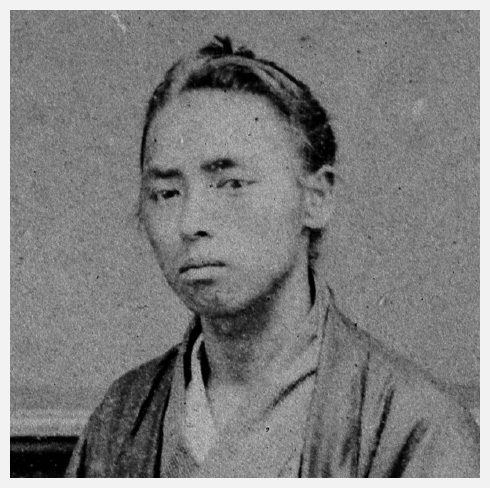
Picture: Yamaguchi Prefectural Museum
1844~1892 (Died at the age of 47)
1st Minister of Justice of Japan
Politician
Yamada Akiyoshi
Profile
Born in the Abu district of the old province of Nagato, in what is now part of the city of Hagi. His father was an official of the Chōshū navy.
After finishing his studies at the domain's Meirinkan academy, he joined Yoshida Shōin’s Shōka Sonjuku Academy in 1857 and became his youngest student.
A strong supporter of the sonnō jōi movement, he signed in blood (along with Takasugi Shinsaku, Kusaka Genzui, Itō Hirobumi, Inoue Kaoru and Shinagawa Yajirō) a petition to expel all the foreigners from Japan.
After Chōshū forces were driven from Kyoto by supporters of the kōbu gattai movement (which aimed for political unity between the bakufu and the imperial court as a measure to strengthen Japan), he went into exile. During this period, he studied western military science under Ōmura Masujirō. He put his training to practical use during the Kinmon incident, the Shimonoseki Campaign, and the Second Chōshū expedition. Despite his youth, he played a major role in the Bōshin War, commanding a group of 700 men under daimyō Mōri Takachika.
Once the new Meiji Government was formed, he was a major general in the new Imperial Japanese Army in 1871, and served as the Minister of Industry, Home Minister, and Minister of Justice. He helped develop the modern Japanese legal code and establish Kokugakuin University and Nihon University.
Places in Yamaguchi related to this figure
- Sufu park
- Former location of Yamada Akiyoshi’s house
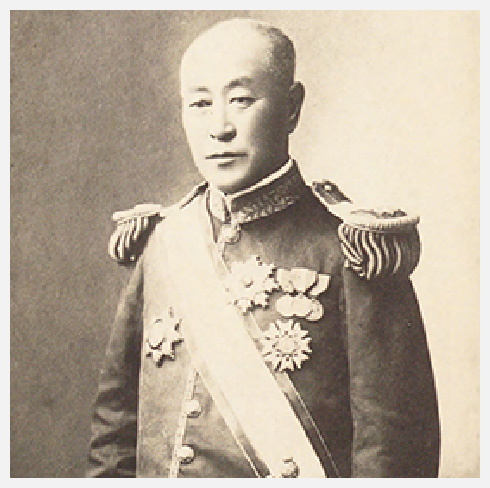
Picture: National Diet Library
1843 – 1910 (Died at the age of 66)
Chief Commissioner of the Railway Board / Politician
Inoue Masaru
Profile
Born in Hagi, Inoue Masaru was brought up as the son of a samurai. At 15, he entered the shogunate’s Nagasaki Naval Academy under the direction of a Dutch naval officer.
In 1863, Inoue, along with four more samurai from Chōshū, were sent to Britain in a secret expedition in a time when travelling abroad was prohibited under the Tokugawa Shogunate's policy of national isolation. These group of young pioneers would be known as the “Chōshū Five”. Inoue studied civil and mining engineering at the University College London, returning to Japan in 1868.
Appointed Director of the Railway Board in 1871. Inoue played a leading role in Japan's railway planning and construction.
After retirement from the government, Inoue founded Kisha Seizo Kaisha, the first locomotive manufacturer in Japan, becoming its first president in 1896. In 1909 he was appointed President of the Imperial Railway Association.
During an official visit to London representing the Ministry of Railways he got ill and died in 1910.
To commemorate his stay in London as a member of the Chōshū Five, the University College London grants two “Inoue Masaru” scholarships each session to study at a Japanese University.
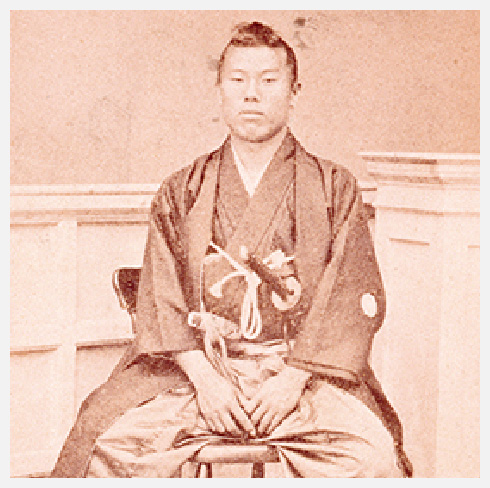
Picture: Yamaguchi Prefectural Museum
1841 – 1909 (Died at the age of 68)
First Prime Minister of Japan
Politician
Itō Hirobumi
Profile
Born in Hagi, Itō studied at the private academy of Yoshida Shōin. He was a fierce advocate of loyalty to the emperor and a critic of the weak response of the bakufu to the West. Like many of Yoshida's students, Itō became an ardent imperialist loyalist(shishi). In 1859 he went to the capital, Edo (modern Tokyo), where he came into contact with many other young samurai with the same ideals and participated in many antiforeign demonstrations.
He was one of the “Chōshū Five”, secretly sent to England to study – in his case, Western naval science (1863). This experience convinced him that violent acts against the foreign presence in Japan was not the way to face the crisis and that Japan needed to adopt Western ways to keep up with the times.
When he received news of Western intentions to attack Chōshū (Bombardment of Shimonoseki) in 1864, which had defied the treaties signed by the bakufu, Ito rushed back to Japan in an attempt to mediate the dispute. He also contributed to the formation of the Satsuma-Chōshū alliance, which would pave the way to the Meiji Restoration of 1868.
As a member of the newly established government, Ito implemented numerous reforms, one of his main achievements being supervising the draft of the Meiji Constitution. In 1885, he established the cabinet system of government and became the first Prime Minister of Japan, a position he would hold in four occasions.
After the Russo-Japanese War (1904–05), he headed the Japanese administration in what was then the protectorate of Korea. In 1909 he was assassinated by an activist for the independence of Korea.
Places in Yamaguchi related to this figure
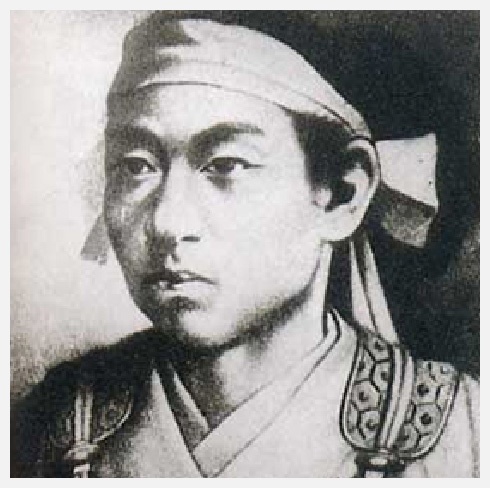
1840 – 1864 (Died at the age of 24)
Feudal retainer of Chōshū Domain
Politician
Kusaka Genzui
Profile
Born in Hagi as the third son of a doctor of the Chōshū domain. At fourteen his mother died, followed by his older brother and his father, making him head of the family and his father’s successor as a doctor.
He joined the Shōka Sonjuku academy, where he would become one of its most outstanding students. Yoshida Shōin himself referred to him as one of Chōshū’s most valuable youths.
In 1862, impatient with Chōshū's moderate political policy, which during that period sought cooperation between the Tokugawa shogunate and the imperial court, Kusaka decided to abandon his homeland and join other imperial loyalists (shishi) in plans to expel foreigners from Japan. In 1853, along with Takasugi Shinsaku and others, he set fire to the British legation in Shinagawa.
Back in Chōshū, he gathered followers and established his troop headquarters in Shimonoseki’s Kōmyōji temple, from where he would plan attacks to foreign vessels crossing the straits.
He traveled to Kyoto as well with the intention of carrying out the jōi-shinsei doctrine (war against foreigners under the leadership of the emperor). Following the political disturbances on September 30th, 1863, during which the Chōshū forces were expelled from the capital by the pro-bakufu domains, he decided to keep fighting for the restoration of their duties as guardians of the imperial palace, but this time following a more cautious strategy. However, disregarding his advice, Chōshū sent an expeditionary force in an attempt to retake the Imperial Palace. The contingent was defeated by Satsuma and Aizu forces (Kinmon Rebellion, 1864). During the course of the battle, Genzui was wounded by rifle fire and being surrounded by enemies, committed suicide along with his followers in aristocrat Takatsukasa Sukehiro’s manor, to whom he wanted to entrust a message addressed to the emperor.
Places in Yamaguchi related to this figure
- » Jippōtei Ishinkan (Jippōtei History Museum)
- Former residence of the Ōtani family
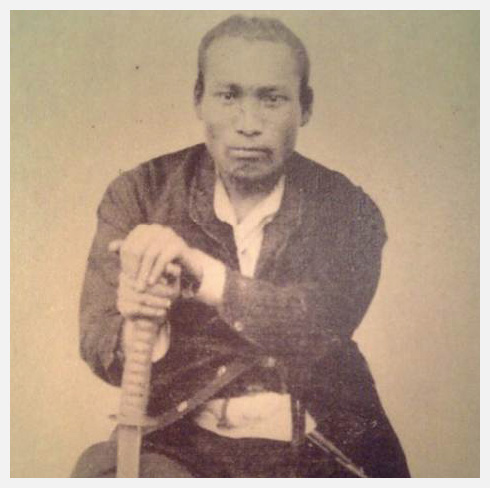
Picture: Denka-roku (Family heirloom record), by Hori Shingoro. Published by Matsuno Shoten
1838 – 1913 (Died at the age of 75)
Commanding General of the Yahatatai/ Judge of the Supreme Court
Politician/ judge
Hori Shingoro
Profile
Son of a Mōri clan’s vassal, Shingoro escaped his domain to join loyalists (shishi) from different regions of Japan. He specially developed a close relationship with Kusaka Genzui and Takasugi Shinsaku. He was one of the pioneers of the sonnō jōi (revere the emperor, expel de barbarians) movement.
He traveled to Satsuma with the aim of gathering support in order to raise an army. With the army that he gathered, he marched towards Kyoto in what would become the first armed insurrection against the Tokugawa regime (Teradaya incident, 1862). However, he found his attempt frustrated the leaders of the Satsuma domain who managed to contain the rebellion.
He participated in the arson attack on the British legation in Shinagawa.
After the coup attempt on September 30, 1863, which caused the Chōshū forces to be driven out of Kyoto, he established the Yahatatai paramilitary unit as a support to Takasugi Shinsaku’s Kiheitai.
After the Meiji Restoration, he carried out an intense professional activity in the legal field.
Throughout the Boshin War (1868-1869) during which the combined forces of Chōshū, Satsuma, and Tosa would ultimately defeat the Shogun’s army, he took up the office of judge at the Home Secretary. After the decisive Battle of Hakodate (between the last supporters of the shogunate, consolidated into the armed forces of the rebel Ezo Republic, and the army of the recently formed imperial government), he supervised the capitulation of the defeated party.
With the new imperial government finally secured, he returned to Tokyo, where he eventually became Judge of the Supreme Court. He was also a member, by imperial appointment, of the House of Peers (formerly the upper house of the Imperial Diet) a duty he would perform until his death in 1913.
Places in Yamaguchi related to this figure
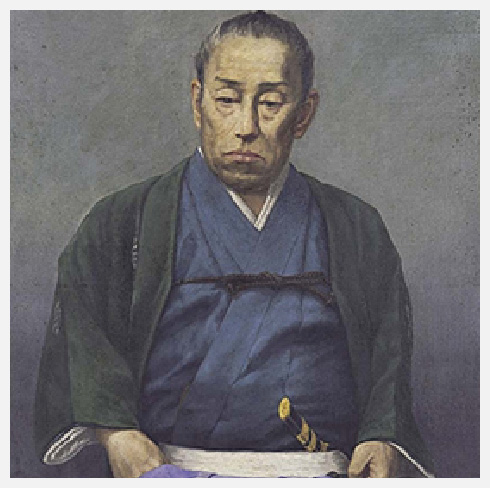
Picture: Yamaguchi Prefectural Museum
1819 – 1871 (Died at the age of 52)
25th head of the Mōri family
Feudal lord
Mōri Takachika
Profile
13th feudal lord of the Chōshū Domain. As traditional enemies of the Tokugawa shogunate, the Mōri clan was a key player in its downfall during the Bakumatsu period.
Takachika came to power during a period of turmoil, with the domain facing serious financial problems. He employed reformists such as Sufu Masanosuke to enforce strict economic policies and relocated the administrative center from Hagi to Yamaguchi, in the center of the domain.
Takachika gave great value to the intellectual education of the young talents of the han, to the extent of sending them overseas defying the bakufu’s seclusion policy. He also held Yoshida Shōin and his academy in high regard. He is remembered for not being an authoritarian leader that delegated responsibility on his vassals. He often used his tearoom “Rōzandō” to celebrate meetings and exchange opinions regardless of social rank.
He implemented risky policies such as allowing the Kiheitai to be created, hiring Ōmura Masujirō as a military strategist, and encouraging young talented samurai to take on active roles and make important contributions in the years preceding and following the Meiji Restoration.
His era was marked by multiple incidents and crisis that would lead to the profound political and social changes of the Meiji Restoration: The Bombardment of Shimonoseki, the shishi patriots’ uprisings, the Kinmon incident, the punitive expeditions to Chōshū, the Satchō Alliance and the Boshin War.
He was the first daimyo to return his land to the emperor. With the decline of his health, he designated Mōri Motonori as his heir, and died shortly after. He was a loved and respected leader, and after his death his vassals erected Noda Shrine in his memory.
Places in Yamaguchi related to this figure
- » “Rozandō” tearoom
- Burial site of the Mōri clan
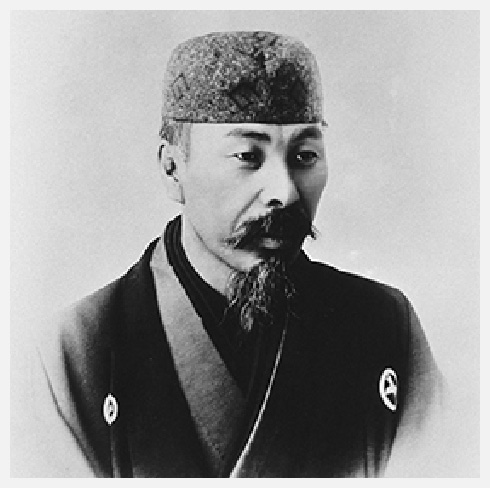
Picture: National Diet Library
1843 – 1900 (Died at the age of 56)
Minister of Home Affairs
Politician
Shinagawa Yajiro
Profile
Born in Hagi. His father was an ashigaru (lower ranking foot soldier) in the service of the Mōri clan. He joined Yoshida Shōin’s Shōka Sonjuku academy, becoming a fervent advocate of the sonnō-jōi movement.
In 1862, together with other samurai, he participated in the arson attack on the British legation. He was also present at the unsuccessful Kinmon rebellion in Kyoto in 1864.
He contributed to the production of the “Nishiki no Mihata” (the traditional Imperial battle standards) in Yamaguchi, which would provide the Chōshū and Satsuma troops with a decisive moral advantage during the Bōshin War. He also participated in several battles in northern Honshū against the remnants of the pro-Bakufu army.
He is also credited with writing the lyrics of “Miyasan, Miyasan”, sang by the shishi loyalists during the Bōshin War.
Following the establishment of the Meiji government, Shinagawa was sent to France to study military technology and strategy in the midst of the Franco-Prussian War. Upon his return, he was appointed Vice Home Minister, followed by the position of Vice Agriculture and Commerce Minister. He supported the development of agriculture and forestry through his efforts towards the formation of credit unions and agricultural cooperatives. He worked as a diplomat in Germany as well. In 1891, he was appointed Home Minister.
Places in Yamaguchi related to this figure
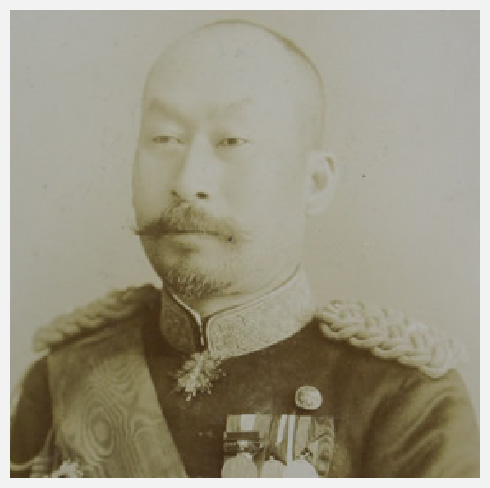
Picture: Yamaguchi Prefectural Archives
1852 – 1919 (Died at the age of 67)
Birthplace: Hirakawa (present-day Hirakawa district, Yamaguchi city)
18º Prime Minister of Japan
Politician
Terauchi Masatake
Profile
Born in Hirakawa Village (present-day Hirakawa district, Yamaguchi city). As a youth, he was a member of the Kiheitai militia from 1864, and fought in the Boshin War against the Tokugawa shogunate from 1867, most notably at the Battle of Hakodate. After the victory at Hakodate, he received French military training in Kyoto.
He fought in the Satsuma Rebellion in 1877 and was injured and lost his right hand.
In 1882 he was sent to France, and appointed deputy secretary to the Minister of the Army and commandant of the Army Academy upon his return. In 1902 he would become Minister of the Army.
In 1910, Terauchi became the third and last Japanese Resident-General of Korea.
In 1916, he was appointed Prime Minister.
During World War I, upon a request by the Allied forces, Terauchi Masatake sent troops into Siberia in support of White Russian forces against the Bolshevik Red Army in the Russian Revolution. The intervention lasted for very long, causing the domestic rice prices to soar, which led to a nationwide wave of protest that forced him out of office.
Places in Yamaguchi related to this figure
- Grave of Terauchi Masatake
